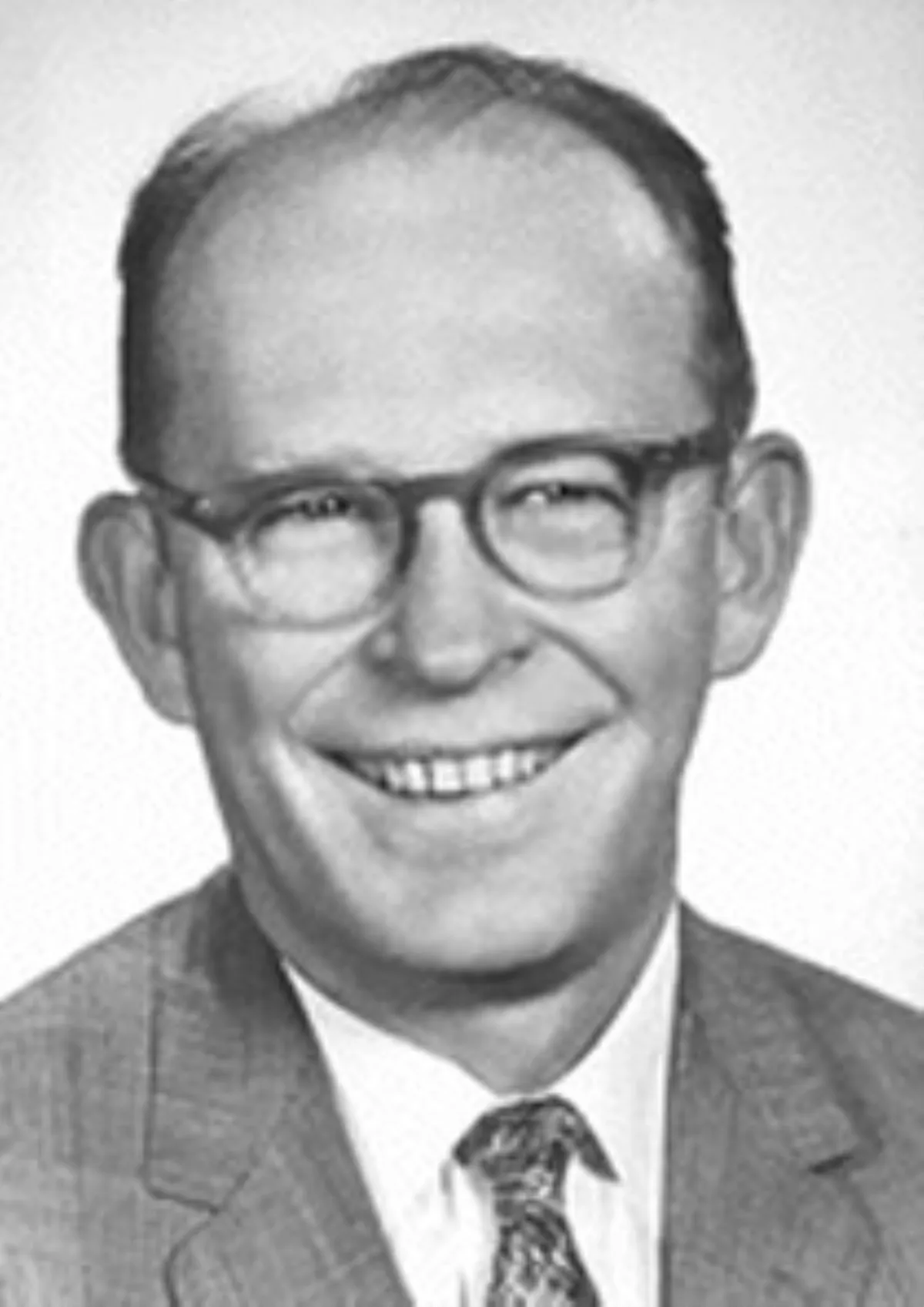 1.
1. Willard Frank Libby was an American physical chemist noted for his role in the 1949 development of radiocarbon dating, a process which revolutionized archaeology and palaeontology.

 1.
1. Willard Frank Libby was an American physical chemist noted for his role in the 1949 development of radiocarbon dating, a process which revolutionized archaeology and palaeontology.
Willard Libby discovered that tritium similarly could be used for dating water, and therefore wine.
Willard Libby was appointed a commissioner in 1954, becoming its sole scientist.
Willard Libby sided with Edward Teller on pursuing a crash program to develop the hydrogen bomb, participated in the Atoms for Peace program, and defended the administration's atmospheric nuclear testing.
Willard Libby resigned from the AEC in 1959 to become professor of chemistry at University of California, Los Angeles, a position he held until his retirement in 1976.
Willard Libby started the first Environmental Engineering program at UCLA in 1972, and as a member of the California Air Resources Board, he worked to develop and improve California's air pollution standards.
Willard Frank Libby was born in Parachute, Colorado, on December 17,1908, the son of farmers Ora Edward Libby and his wife Eva May.
Willard Libby had two brothers, Elmer and Raymond, and two sisters, Eva and Evelyn.
When he was five, Willard Libby's parents moved to Santa Rosa, California.
Willard Libby attended Analy High School, in Sebastopol, from which he graduated in 1926.
Willard Libby was appointed Instructor in the department of chemistry at the University of California, Berkeley, in 1933.
Willard Libby became an assistant professor of chemistry there in 1938.
Willard Libby spent the 1930s building sensitive Geiger counters to measure weak natural and artificial radioactivity.
Willard Libby joined Berkeley's chapter of Alpha Chi Sigma in 1941.
On December 8,1941, the day after the Japanese attack on Pearl Harbor brought the United States into World War II, Willard Libby volunteered his services to Nobel Prize laureate Harold Urey.
Urey arranged for Willard Libby to be given leave from the University of California, Berkeley and to join him at Columbia University to work on the Manhattan Project, the wartime project to develop atomic bombs, at what became its Substitute Alloy Materials Laboratories.
Willard Libby helped with the engineers from Kellex to produce a workable design for a pilot plant.
Willard Libby conducted a series of tests that indicated that the Norris-Adler barrier would work, and he remained confident that with an all-out effort, the remaining problems with it could be solved.
Willard Libby realized that when plants and animals die they cease to ingest fresh carbon-14, thereby giving any organic compound a built-in nuclear clock.
Willard Libby published his theory in 1946, and expanded on it in his monograph Radiocarbon Dating in 1955.
Willard Libby developed sensitive radiation detectors that could make the measurements required by the technique.
Willard Libby discovered that tritium similarly could be used for dating water, and therefore wine.
Willard Libby argued that the dangers of radiation from nuclear tests were less than that from chest X-rays, and therefore less important than the risk of having an inadequate nuclear arsenal, but his arguments failed to convince the scientific community or reassure the public.
Willard Libby resigned from the AEC in 1959, and he became professor of chemistry at University of California, Los Angeles, a position he held until his retirement in 1976.
Willard Libby started the first Environmental Engineering program at UCLA in 1972.
Willard Libby established a research program to investigate heterogeneous catalysis with the idea of reducing emissions from motor vehicles through more complete fuel combustion.
The election of Richard Nixon as president in 1968 generated speculation that Willard Libby might be appointed as Presidential Science Advisor.
Willard Libby was an elected member of the National Academy of Sciences, the American Academy of Arts and Sciences, and the American Philosophical Society.
Willard Libby was elected a member of the National Academy of Sciences in 1950.
In 1940, Willard Libby married Leonor Hickey, a physical education teacher.
In 1966 Willard Libby divorced Leonor and married Leona Woods Marshall, a distinguished nuclear physicist who was one of the original builders of Chicago Pile-1, the world's first nuclear reactor.
Willard Libby joined him at UCLA as a professor of environmental engineering in 1973.
Willard Libby died at the UCLA Medical Center in Los Angeles on September 8,1980, from a blood clot in his lung complicated by pneumonia.
Willard Libby's papers are in the Charles E Young Research Library at UCLA.